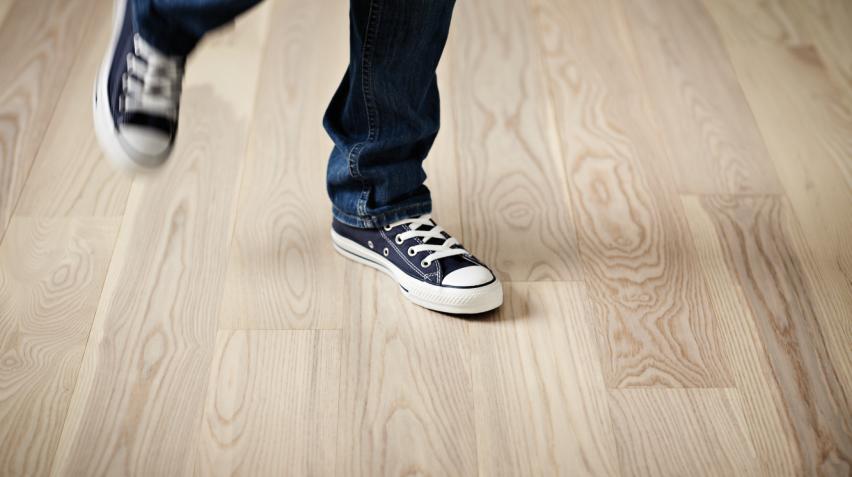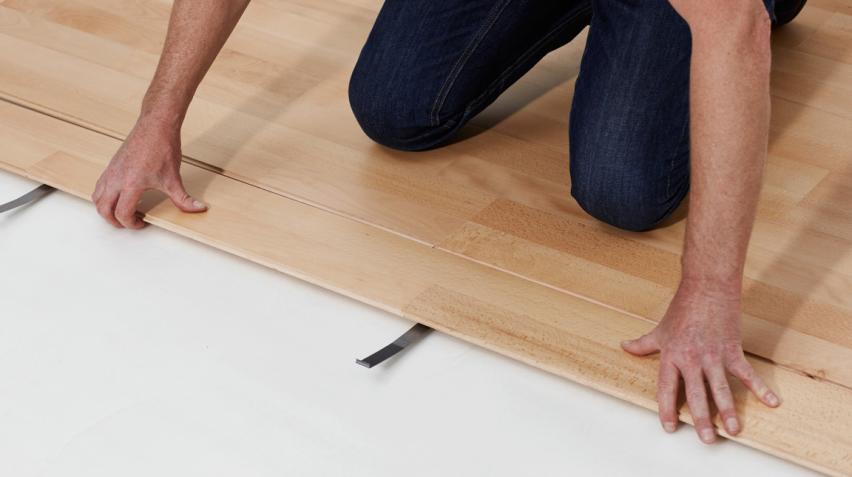Wood Floor Underlayment: What It Is and Why It Matters
When planning a new wood floor for your home, it’s easy to focus on the visible beauty of the planks themselves. But there’s an essential layer beneath the surface that significantly impacts how your floor looks, feels, and performs over time: the underlayment. In this guide, you’ll learn what wood floor underlayment is, why it plays such a critical role in a successful flooring installation, and how it can help protect your investment from common issues like moisture, noise, and uneven subfloors. Whether you’re renovating or building new, understanding the function of underlayment will help you make informed choices for a more comfortable and durable home.
Understanding Wood Floor Underlayment
When planning a new wood floor for your home, one key component often goes unnoticed: the wood floor underlayment. This thin, resilient layer is installed directly between the subfloor—whether it’s concrete or plywood—and your finished hardwood flooring. While the wood planks provide the visible beauty and character of your floor, the underlayment works quietly beneath the surface, shaping the way your floor feels, sounds, and performs over time.
It’s important to distinguish between the subfloor, underlayment, and hardwood floor:
- The subfloor is the structural base of your room.
- The underlayment provides support, comfort, and protection.
- The hardwood flooring forms the topmost layer that you see and enjoy every day. For an overview of what’s possible in solid wood, see the options for solid hardwood flooring.
Benefits of Using Underlayment for Wood Floors
Investing in wood floor underlayment offers several practical benefits for private homes.
- Moisture protection: Underlayment with a built-in moisture barrier helps shield your solid wood floor from water vapor, reducing the risk of warping, swelling, or mold—especially important if your subfloor is concrete.
- Noise reduction: Walking on wood can create sound that travels through your home. Underlayment absorbs impact noise and airborne sound, making your living space noticeably quieter.
- Enhanced comfort: The softness and resilience of underlayment create a gentle, supportive feel underfoot.
- Thermal insulation: Quality underlayment can help maintain a comfortable indoor temperature by providing a layer of insulation.
- Correction of subfloor imperfections: Even minor irregularities in the subfloor can be smoothed out, resulting in a more stable and even surface for your wood flooring.
- Increased stability and lifespan: Underlayment supports the natural expansion and contraction of wood, reducing the risk of gaps or buckling and helping your floor last for generations.
Types of Wood Floor Underlayment and Their Features
Not all underlayments are the same. The right choice depends on your home’s needs, installation method, and the specific hardwood floor you select.
- Foam underlayment: Lightweight and easy to install, foam is great for most applications and often includes a moisture barrier.
- Cork underlayment: Naturally resistant to mold and mildew, cork provides excellent sound and thermal insulation—ideal for bedrooms or family rooms.
- Rubber underlayment: Durable and highly effective at dampening sound and resisting moisture, rubber is a robust choice for busy areas.
- Combination products: Some options combine foam with an integrated vapor barrier, offering both comfort and moisture protection.
When choosing a wood floor underlayment, ensure compatibility with your chosen installation method—like floating floors or glue-down systems. For a practical overview, explore installation methods for Junckers floors.
When Is Underlayment Necessary?
Different floor installations and subfloor types have different requirements for underlayment. Here’s a quick overview:
- Floating installations: Always need underlayment for stability, moisture protection, and sound absorption.
- Concrete subfloors: Require a moisture barrier to protect the wood floor.
- Wood subfloors: May not always need a moisture barrier, but underlayment is still recommended for comfort and noise reduction.
- New builds vs. renovations: Both scenarios benefit from underlayment, but the specific requirements may differ based on the subfloor condition and installation type.
| Installation Type | Subfloor Type | Underlayment Needed? |
|---|---|---|
| Floating | Concrete | Yes, with moisture barrier |
| Floating | Wood | Yes |
| Glue-down or batten | Concrete | Yes, with moisture barrier |
| Glue-down or batten | Wood | Optional for sound/comfort |
If you’re considering a floating floor, it can be helpful to learn more about the Junckers Clip system. For glue-down installations, you’ll find step-by-step guidance in the section on how to glue down hardwood floors. For a more traditional approach, see the traditional batten system.
How to Choose the Right Wood Floor Underlayment for Your Home
Selecting the right underlayment ensures your solid wood floor looks and feels its best. Consider these factors:
- Type of hardwood flooring: Some underlayments pair better with certain Junckers floors, such as 2-strip wooden flooring, herringbone parquet, or HexParket.
- Subfloor material: Concrete typically requires a moisture barrier; wood subfloors may focus more on sound and comfort.
- Room usage: High-traffic areas benefit from more durable, sound-absorbing underlayments.
- Household needs: If you have children or pets, prioritize comfort and noise reduction.
- Underfloor heating: Make sure your underlayment is compatible with heating systems for maximum efficiency. You can also explore under floor heating for solid hardwood floors.
Installation Tips for Underlayment with Junckers Solid Wood Floors
A successful installation begins with a clean, dry, and level subfloor. Here are some practical tips:
- Always follow the manufacturer’s instructions for both underlayment and flooring.
- Roll out the underlayment smoothly, ensuring edges are tightly butted or taped (if required).
- Avoid overlapping underlayment seams, which can create unevenness.
- For floating installations, select an underlayment with a built-in moisture barrier if installing over concrete.
- Ensure the underlayment is suitable for your chosen Junckers installation method—clip, glue-down, or battens.
For detailed technical information, consult the product information and installation instructions specific to your floor and underlayment choice.
Sustainable Choices: Underlayment and Healthy Indoor Environments
Choosing quality underlayment and sustainable hardwood floors supports a healthy home and a responsible lifestyle. Many Junckers floors are sourced from responsibly managed forests and carry certifications like FSC® or PEFC. In addition, products with indoor climate labelling contribute to a safe and comfortable environment for your family. When combined with the right underlayment, these certified floors help ensure both well-being and peace of mind for years to come.
Learn More About Wood Floor Solutions from Junckers
If you’re considering upgrading your home with solid hardwood flooring, Junckers offers a wide selection of styles and finishes, all designed for lasting beauty and performance.
- Discover the full range of solid hardwood flooring for private homes
- Explore the different installation methods for Junckers floors
For personalized advice or to discuss your project, contact Junckers. Our experts are here to help you achieve the perfect foundation for your home.
Frequently Asked Questions About Wood Floor Refinishing
How often can wood floors be refinished? add
This depends on the thickness of your floorboards, but solid hardwood floors can typically be refinished several times during their lifespan.
Is wood floor refinishing compatible with underfloor heating? add
Yes—Junckers’ floors and finishes are fully compatible with underfloor heating when installed according to guidelines.
How long does wood floor refinishing take? add
The process usually takes several days, including drying and curing time. The exact timeline depends on your floor’s size and finish choice.
Can I change the look of my floor during refinishing? add
Absolutely. Refinishing gives you the opportunity to update color, sheen, or finish to match your current style.
For more answers, contact Junckers’ expert team.



